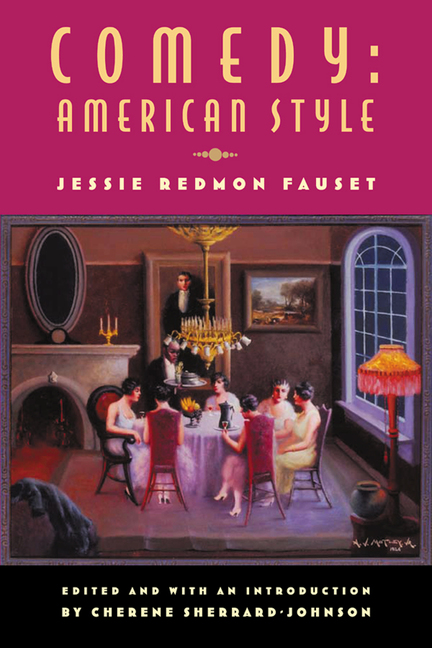Jessie Fauset’s Plum Bun and the City’s Transformative Potential
Legacy: A Journal of American Women Writers
Volume 30, Number 2, 2013
pages 265-286
DOI: 10.1353/leg.2013.0031
Catherine Rottenberg, Assistant Professor
Department of Foreign Literatures and Linguistics and the Gender Studies Program
Ben-Gurion University, Beer-Sheva, Israel
We are mainly indebted to writers of fiction for our more intimate knowledge of contemporary urban life. (3)
Robert E. Park, “The City,” 1925
In a moment of accumulated outrage at the humiliations of everyday racism, Angela Murray, the protagonist of Jessie Redmon Fauset’s 1928 novel Plum Bun, decides to leave what she considers her staid hometown of Philadelphia and launch herself “into a freer, fuller life” that can be had only in a truly great city like New York (80). To avail herself of the greatest possible freedom, she also chooses to cross the color line and pass as white. This is a decisive—if expected—moment in the text, and the rest of the narrative details the various repercussions of Angela’s daring decision to set off as an unfettered woman. Fauset’s novel thus traces Angela’s movement over time and space: from her early years in a respectable black neighborhood in Philadelphia, through her adventures as a young woman passing as a white artist in bohemian Greenwich Village, and eventually to reclaiming her racial identity and moving to Paris to pursue her art. At the novel’s conclusion, Angela is coming into her own as a portrait artist and has been reunited with the love of her life, Anthony Cross.
Set exclusively in various and increasingly cosmopolitan city spaces—from Philadelphia to New York City to Paris—Fauset’s novel participates, at least to some degree, in the “urban aesthetics” of Harlem Renaissance literature that Maria Balshaw details in Looking for Harlem. In her book Balshaw considers the then-nascent discipline of urban sociology as practiced by thinkers such as Robert E. Park, whose words serve as the epigraph to my essay, and Charles S. Johnson. She demonstrates that their progressive ideas about urban space formed an important background to the optimism of the Harlem Renaissance (23). Yet Balshaw does not discuss Fauset’s work at any length, despite the fact that Plum Bun—like Nella Larsen’s Quicksand and Passing—clearly takes part in the ongoing debate about “the embeddedness of African American women in consumer culture and in the city” (97, emphasis added). Because Plum Bun engages in important ways with both urban aesthetics and the concerns of urban sociology, I will demonstrate that the novel can be read as raising crucial and timely questions about the emancipatory potential of urban space for upwardly mobile black women.
By emphasizing the centrality of city space in Plum Bun, I add a new dimension to literary criticism on Fauset while reinforcing Kathleen Pfeiffer’s claim that the novel’s narrative is “neither anachronistic nor marginal” but rather modern, complex, and worthy of serious scholarly attention (80). Susan Tomlinson has convincingly argued that Plum Bun “explores the intersections of race and gender constructions of black and white American women” (90). Angela Murray, Tomlinson suggests, manages to emulate two norms of womanhood: that of the New Negro Woman—characterized by racial pride and sexual respectability—and that of the New Woman—characterized by sexual experimentation and the pursuit of a public career. Yet, according to Tomlinson, not until the novel’s end—when Angela is in Paris, has disclosed her racial identity, and begins to devote herself to her artistic career—”do both gender and racial advancement coalesce in the unified female subject” (90). The impossibility of combining these norms in one female subject in turn reveals their contradictions and mutual exclusivity. Cherene Sherrard-Johnson makes a similar point, suggesting that the passing character as artist is the locus of Fauset’s oscillation between advocating an avant-garde womanhood and endorsing a more conventional New Negro womanhood (Portraits 49). Pfeiffer, on the other hand, examines the narrative in light of its even larger cultural context, suggesting that Fauset uses passing as a way to reflect on “the multivalent transformations in which white American culture at large was then participating” (80). Defending Plum Bun from critics who have summarily dismissed it, Pfeiffer claims that the novel is deeply invested in the larger philosophical question preoccupying contemporaneous US intellectuals, namely, whether “absolute freedom aid[s] or obstruct[s] the development of meaningful identity” (79). Fauset consequently records a general…

